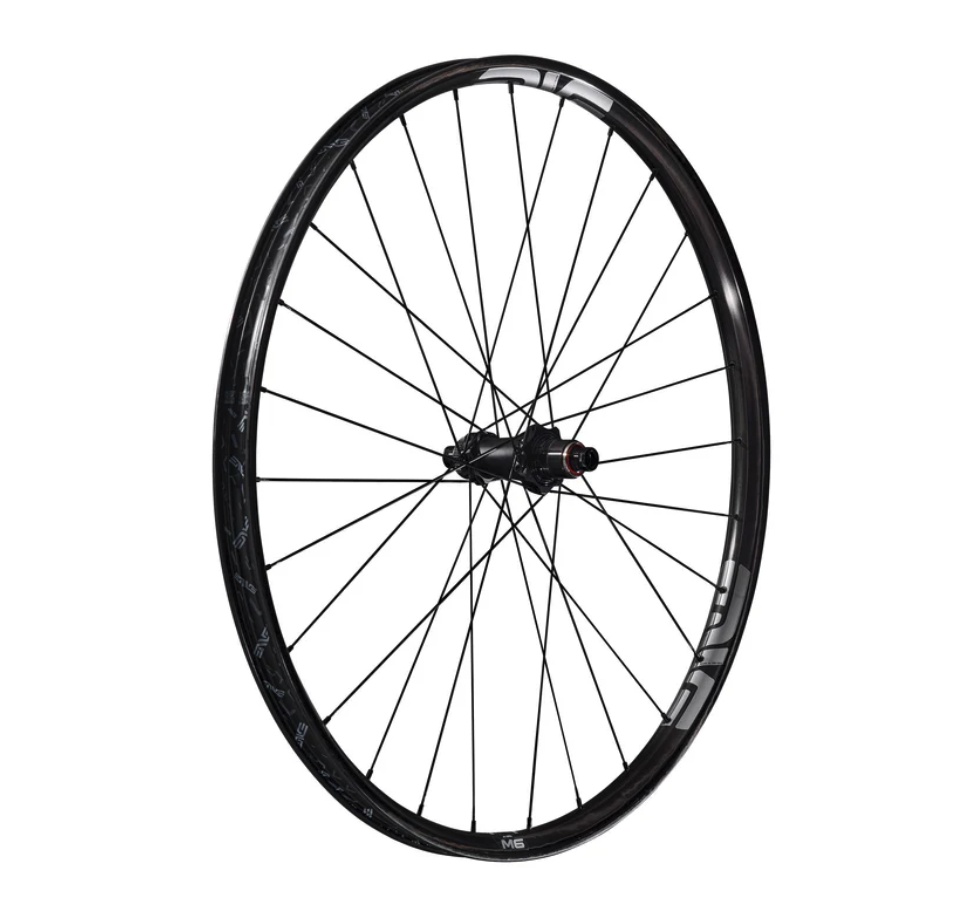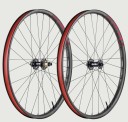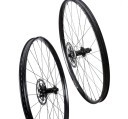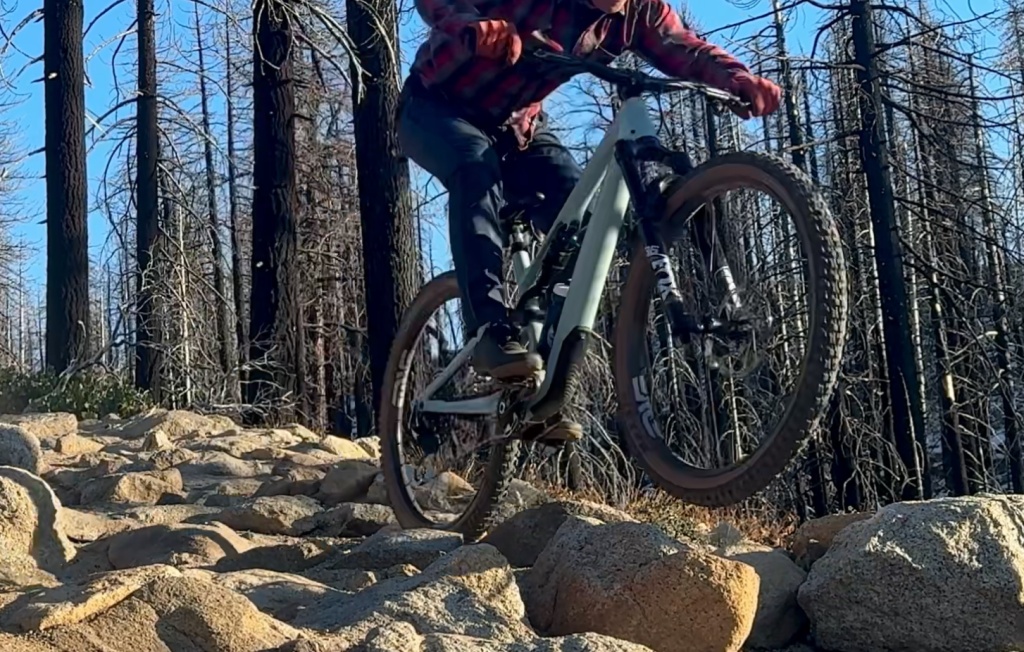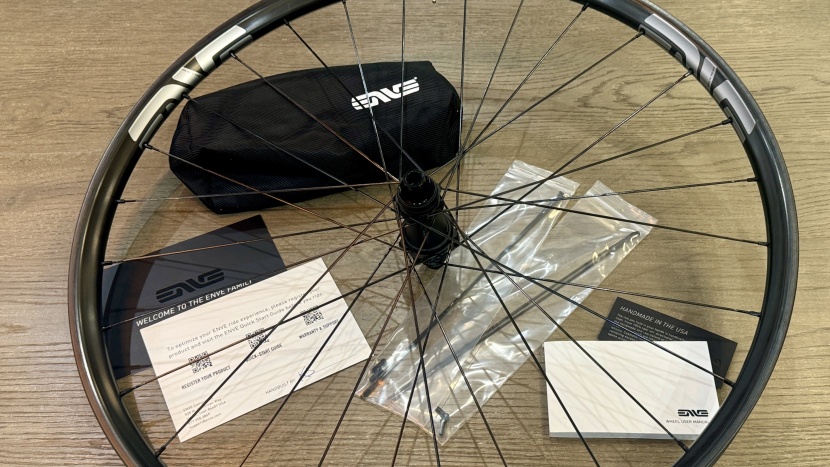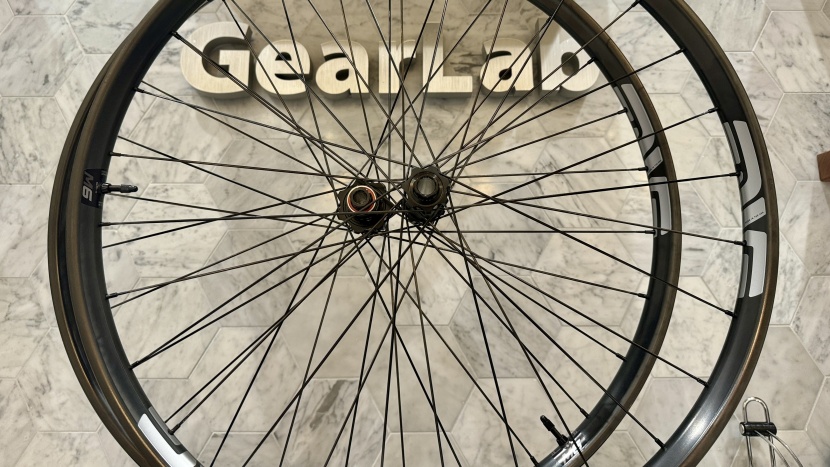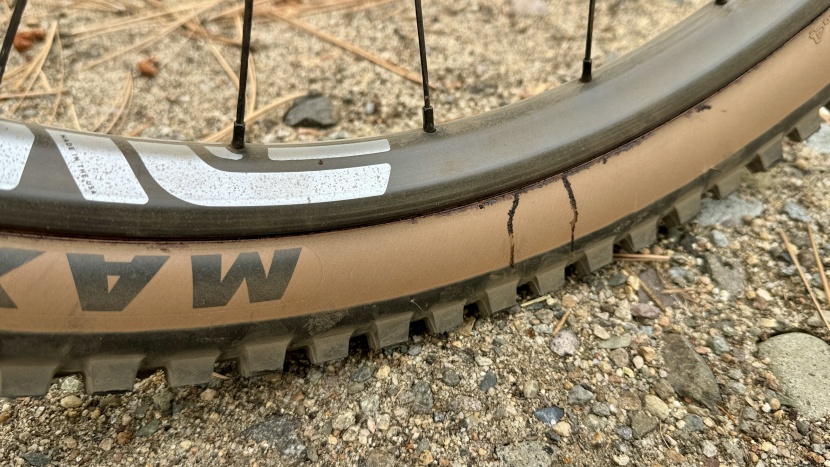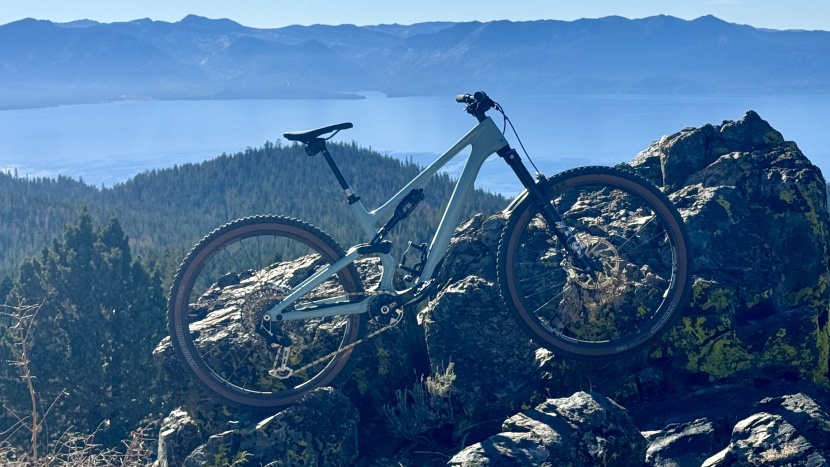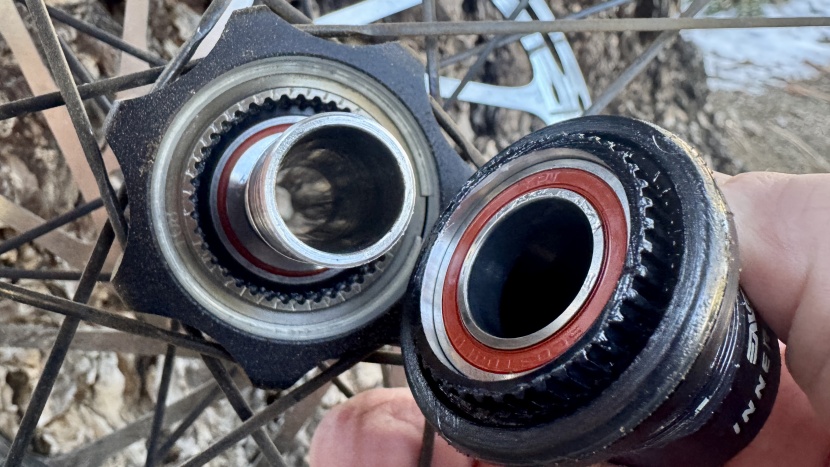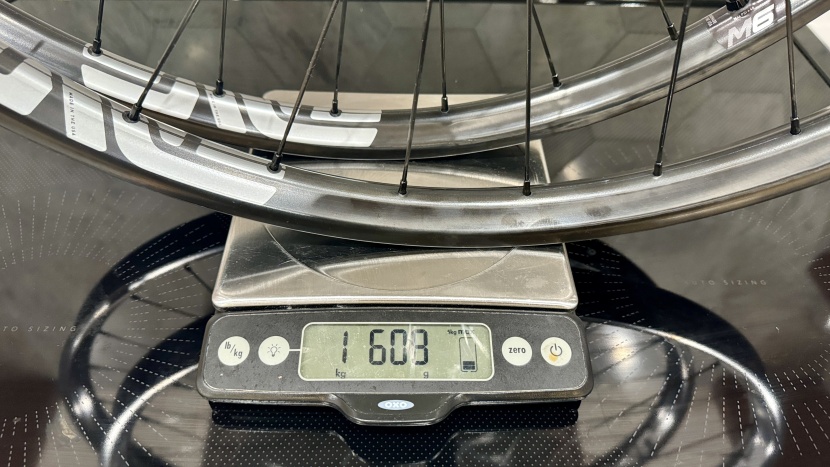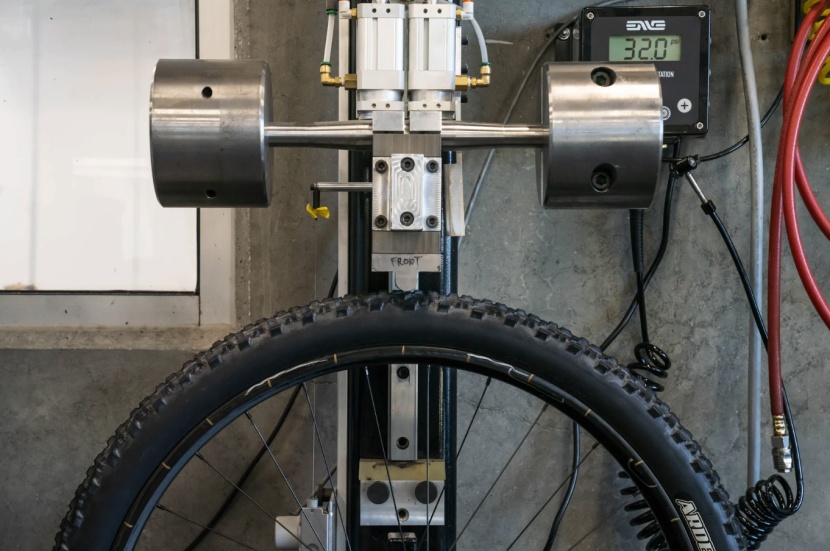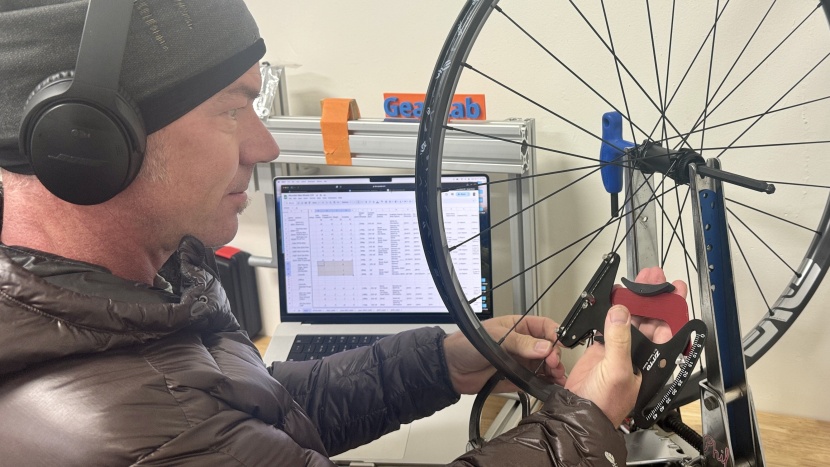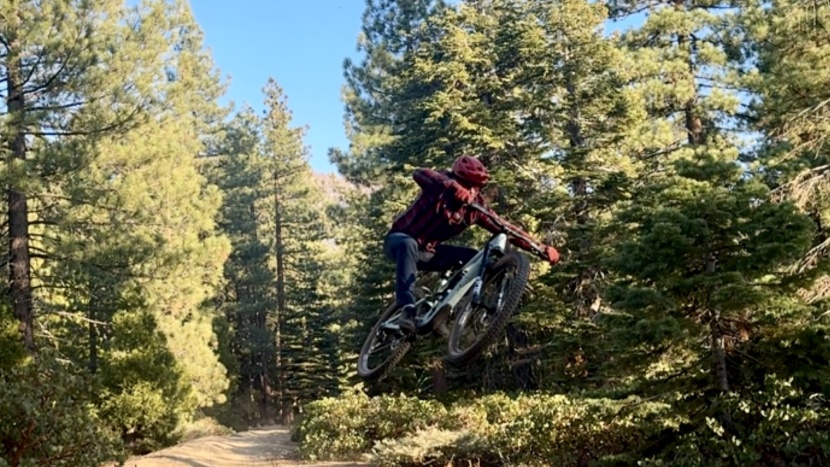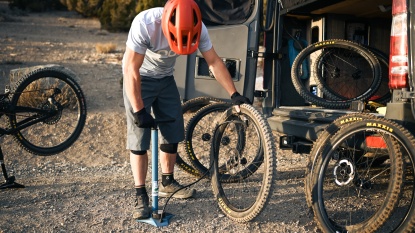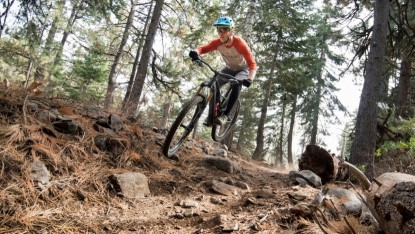Enve M6 Wheelset Review
Our Verdict
Compare to Similar Products
 This Product
Enve M6 Wheelset | |||||
|---|---|---|---|---|---|
| Awards | Best Overall Mountain Bike Wheels | Best Overall Alloy Mountain Bike Wheels | Best Bang for the Buck Carbon | Best Bang for the Buck Alloy | |
| Price | $2,300 List | $1,599 List $825.00 at Evo | $795.16 at Backcountry Compare at 3 sellers | $1,250 List | $449 List |
Overall Score  |
|||||
| Star Rating | |||||
| Bottom Line | A lighter and more comfortable wheel from Enve brings remarkable engineering, but cost and workmanship may be their downfall | An incredibly compliant wheelset with high-performance hubs, agreeable engagement, and a lifetime warranty | These are easily the highest performance alloy wheels we've ever tested | Straight to the source, these wheels offer excellent performance and exceptional value | These wheels perform better than their price might suggest, we found them to be capable and durable |
| Rating Categories | Enve M6 Wheelset | RaceFace ERA Wheelset | Industry Nine Endur... | Forge + Bond Shift... | Hunt Trail Wide MTB |
| Ride Quality (35%) | |||||
| Freehub Engagement (20%) | |||||
| Weight (25%) | |||||
| Durability (20%) | |||||
| Specifications | Enve M6 Wheelset | RaceFace ERA Wheelset | Industry Nine Endur... | Forge + Bond Shift... | Hunt Trail Wide MTB |
| Weight Per Wheelset | 1608g | 1768g | 1,895g | 1850g | 1869g |
| Available Wheel Sizes | 29", MX | 27.5", 29" | 27.5", 29" | 29" | 27.5", 29" |
| Available Axle Spacing | Boost, Super Boost | Boost, Super Boost | Boost, non-Boost, Super Boost 157 | Boost | Boost, Super Boost |
| Available Freehub Body Options | Shimano Micrspline, SRAM XD | SRAM XD, Shimano Microspline | Shimano HG, SRAM XD, MicroSpline | Shimano Micrspline, SRAM XD | Shimano HG, Shimano Micrspline, SRAM XD |
| Rim Inner Dimension | 32F/29R | 30mm | 30.5mm | 30mm | 30mm |
| Rim Outer Dimension | 40.4/38.4mm | 37mm | 34.1mm | 38mm | 34.5mm |
| Offset | 0mm | 4mm | 0mm | 0mm | 0mm |
| Spoke Count | 28 | 28 | 28 | 28 | 28 |
| Brake Rotor Attachment | Center Lock | 6-bolt (Center-Lock coming soon) | 6-bolt | 6-bolt | 6-bolt, Center Lock |
| Freehub P.O.E | 4.5-degree | 3-degree | 0.52-degree | 2.25-degree | 5-degree |
| Warranty Policy | 5-year factory warranty and "lifetime incident protection" | Lifetime | 2-year | Lifetime | 3-years against material or workmanship defects |
Our Analysis and Test Results
A heavy hitter in the carbon wheel world, Enve Composites out of Ogden, Utah, gives us a long-awaited update to their M-Series mountain wheels. Using Enve's own Innerdrive hubs with 28 direct pull spokes and adjustable engagement, these wheels feature uniquely formed front and rear-specific rim profiles to deliver the best ride yet.
Product Specifications
Enve put some serious work into redesigning the M-series wheel, giving us more compliance, comfort, and tunability than ever before. Using their own Innerdrive hubset, the heart of this wheelset spins on larger diameter ratchets that increase engagement and durability without sacrificing weight. The hubs use 28 straight pull spokes and the “Perfect Preload system” to prolong bearing life and minimize maintenance. The M-Series mountain wheels ship with 80-tooth ratchets that provide 4.5 degrees of engagement, but 60-tooth (6 degrees) or 100-tooth (3.6 degrees) are available for an extra $100.
The house-made carbon hoops use a special layup with a different rim profile and width for the front and rear rims. The front rim has a depth of 21mm and uses a 4.2mm rim wall with an internal width of 32mm and an external width of 40.8mm. This gives the front rim more deflection than past wheels to provide more comfort and reduce the feedback riders feel from rough lines and poor choices. The rear rim also has a depth of 21mm but uses a 4.7mm hookless bead and a narrower 29mm inner width for a rim that measures 38.4mm externally. 56 Sapim CX Ray spokes (all the same length!) lace up 3-cross to bring us a trail bike wheelset at just 1608 grams.
Tailoring the ride quality for each end of the bike is ideal, as the front and rear have drastically different duties. Having different widths and shapes of carbon rims isn't exactly novel, but Enve takes a unique approach by keeping the front and rear at the same depth. Unlike past M-series wheels with loud graphics and multi-colored decals, the M6 is fairly subtle, with an appearance closer to the AM30 wheels.
The M6 wheelset is available in 29" and MX, with the latter saving 33 grams. Rear hub spacing is standard 148mm Boost but also available in 157mm Super Boost with your choice of XD or Micro Spline freehub bodies. The hubs are centerlock rotor compatible, and there is no 6-bolt option. Perfect preload is made possible by tuned wave washers that sit inside the end caps and exert “just the right amount” of pressure on the bearings.
Ride Quality
After an initial inspection and recording of data, I was eager to get out on Enve's new wheels. Tubeless tape and valves came pre-installed, and with a bit of Orange Seal, they were ready for a fresh set of Maxxis rubber. I mounted the tires, an XD cassette, and a pair of center lock rotors. I inflated them to 30 psi before dropping to 22/24 psi once I was ready to ride. I first installed them on a Stumpjumper 15 and set out to give the wheels a feel. Within the first few miles, I burped the rear wheel in a rock garden and was surprised to feel the telltale sealant spray. There was no damage to the rim, and I wrote it off as an anomaly, albeit one I haven't experienced in quite some time.
The wheels spin up quickly, but without that characteristic, super-stiff Enve feel. They feel more nuanced, muted, and softer but plenty responsive. Pushing through several sustained climbs, it was easy for them to disappear beneath me. Traction didn't feel noticeably different, but the engagement felt a touch slower than the past few wheelsets I've been testing. I like to make dicey, technical moves where engagement is certain, and you're never thrown off balance as you ratchet forward, waiting for your hub to engage. The M6 isn't slow to engage, but they're not class-leading; even if I had dropped the extra $100 for 3.6-degree engagement, they'd be 1/6th as fast as the I9 Solix for the same price.
On the first sustained downhill, I had to marvel at the amount of noise coming from the rear hub. The Innerdrive uses a ratchet-style engagement, much like DT Swiss, but perhaps due to the larger ratchets and minimalist hub shell, far more sound emanates from the center of the rear wheel. It doesn't have the buzz of Chris King or “wee-oh-wee-oh” of an I9; it's a startling “glack-glack-glack.” You get used to the sound, but it's louder than most other wheels I'm currently riding and certainly not stealthy.
At faster speeds, I found the wheels remarkably enjoyable; their compliance in rough terrain muted the chatter and gave way to a higher level of control. There was no discernible negative flex pushing hard into corners or loading up the front wheel in a launch. The freehub noise aside, the wheels felt like they were quieting the trail and ushering me forward. I spent a lot of time in rock gardens and particularly rough sections that most riders avoid. I wanted to understand how much ankle compliance or flex the wheel would allow in these pinball-ish, high-deflection situations. They certainly tame the terrain, but they are not at the same level as I experienced with the Zipp 3Zero Moto or RaceFace ERA wheels.
Freehub Engagement
As I wrote above, the Enve Innerdrive uses a ratchet-style engagement system similar to a newer DT-Swiss hub. This hub style is fundamentally different from a pawl and spring-style engagement and is widely seen as more durable. There are no tiny springs or phases of engagement. The hardened steel ratchets have teeth facing one another, and that number of teeth dictates how fast your hub will engage. Enve makes 40, 60, 80, and 100 tooth ratchets. Mountain wheels come with 80-tooth drive rings, which gives them 4.5-degree engagement. Upgrading to a 100-tooth drive ring gives you (360/100=) 3.6-degree engagement. For the uninitiated, faster engagement means less dead space in your pedal stroke, especially when starting, ratcheting, or catching up to the speed of your wheels. A contingent of riders argue that fast engagement makes you more susceptible to backlash, which is the force your suspension puts back into the drivetrain. With slower engagement, the kickback from your suspension is absorbed by that dead space in the drivetrain and isn't transmitted to your pedals.
The flip side of this is that faster engagement gives you more instantaneous acceleration. Imagine sitting above a large drop at low speed; making the move necessitates wheelying off the drop. In one fluid motion, you push down on the pedals while pulling up on the handlebars, and the bike accelerates beneath you, allowing you to launch and land this drop evenly on both wheels. If your hub doesn't engage readily, you pull up on the handlebars while pushing into dead space, all of your weight shifts forward without adequate propulsion, and you're now careening into the drop nose first. This might seem overly dramatic, but the more accurately you can predict the movement of your bike, the more precisely you can ride.
Weight
Enve list the weight of the M6 wheelset at 1575 grams for a 29" pair and 1544 grams for a Mullet set. Our wheels weighed in at 1608 grams with tubeless tape and valves installed. It's not the exact claimed weight, but it doesn't feel like an egregious misrepresentation. For an e-bike-compatible trail bike wheelset, this is incredibly lightweight. The rims weigh 430/445 grams for the front and rear, respectively. The Innerdrive hubs weigh 109/217 grams, making them some of the lightest mountain bike hubs you can buy.
Sapim CX Ray spokes, and Alpina Nylock nipples keep the weight in check while offering external truing options. The nipples are also brass, adding a few grams but offering excellent long-term durability. The ride feel is definitely lightweight as the wheels accelerate quickly, and you don't feel the centrifugal force of them pulling you up out of a deep corner. While weight isn't everything, rotational weight makes a big difference on your trail bike.
Durability
Enve uses a series of laboratory durability tests to develop and test these wheels. A standard impact test drops a weight of increasing mass onto the rim to mimic casing a jump or having a direct hit to both rim sidewalls simultaneously. The test data they publish shows that the M6 is significantly more impact-resistant than the older M630 and has almost the same strength as the M8. In the single-sided impact test, they use a similar weight drop method on one sidewall and increase the weight until a failure is detected. In this test, the M6 is almost as strong as the outgoing M730 rim, which weighs 116 grams more than the rear M6 hoop. Enve also uses an every spoke hole impact test that rotates the wheel after each impact. This test strives to create a more real-world scenario of rim failure by landing hundreds of impacts all over the wheel. Their data shows an almost 100% increase in durability over the M630. This is cool testing, but we don't base our durability score on their tests; after all, who rides with 32 psi in their tires?
When the wheels arrived at our facility, we unboxed them and immediately put them on the truing stand to measure and record each spoke's tension. Since we can't realistically ride the wheels for multiple seasons before publishing this review, we must make some calculated assumptions about the wheel's durability. The durability of a wheel is much more than the impact resistance of the rim and tolerances of the hub and bearings. The wheel is a system that endures more punishment than almost any other component on your bike. When we measured the spoke tension on the M6 wheels, we found tensions that were not homogenous. Spoke tension on the Sapim CX Ray bladed steel spokes should be 120kgf, but we observed tensions as low as 56kgf and as high as 141kgf. These are massive disparities in relative spoke tension, which doesn't bode well for the long-term durability of the wheels. When spokes have uneven tension, the wheel is less structurally stable and more susceptible to detensioning and damage. After a few hundred miles, we put the wheels back in the truing stand to check and reference the observed spoke tensions and found reductions in several spokes on each wheel. While no apparent damage was observed, we brought the spokes up to an even tension before reinstalling them for long-term testing.
Any conversation about durability should include the details of the manufacturer's warranty. Enve backs their wheels with a “5-year Factory Warranty and Incidental Damage Protection,” but what does that mean? Enve says, “Products are warranted to be in conformance with ENVE material and workmanship specifications. Items deemed eligible for coverage under the ENVE Factory Limited Warranty will be replaced or repaired at the discretion of ENVE for the defined period from the date of purchase.” which is 5 years. The warranty does not cover misuse or abuse; the wheels also include incidental damage protection. This is a “coverage program for original owners that protects against accidental damage caused to the product from riding, racing, crashing, dog ate your wheel” types of scenarios and it lasts for five years but coverage tapers down after three years. In my experience, a broken rim after three years results in Enve offering you a discount on the purchase of a new product. In an age of “No questions asked, Lifetime (of the product) Warranties,” Enve offers less value here.
Value
It seems like we're living in the golden age of carbon wheels as they've become much more durable, compliant, and affordable, but Enve is still pushing the envelope in terms of price. At $2300, these wheels sit at the higher end of the price spectrum. American manufacturing isn't cheap, but does the M6 have a value proposition for today's trail riders? They're not the lightest, fastest to engage, or most customizable wheels to cross my review desk this year; that honor belongs to the Industry Nine Solix wheelset that cost $100 more than the M6. They're not the most compliant wheels I've ridden this year either; those would be the Zipp 3Zero Moto or RaceFace ERA wheels, which are a bit heavier than the M6. While these Enve wheels list many favorable attributes, it doesn't feel like value is one of them.
Conclusion
The Enve M6 is a great new set of wheels that are better than their predecessors in every way, but they're also in a much more crowded field of competitors. Many of those competitors beat Enve to the punch with more compliant wheels, and most of them sell wheels for significantly fewer dollars with better warranties. If you're intent on supporting American manufacturing, Enve is one of your options, but they're not alone. I'd feel better about these wheels if they had arrived with even spoke tension, and while we've remedied that issue by twisting some nipples, that shouldn't be the consumer's responsibility on a wheelset at this price point.


